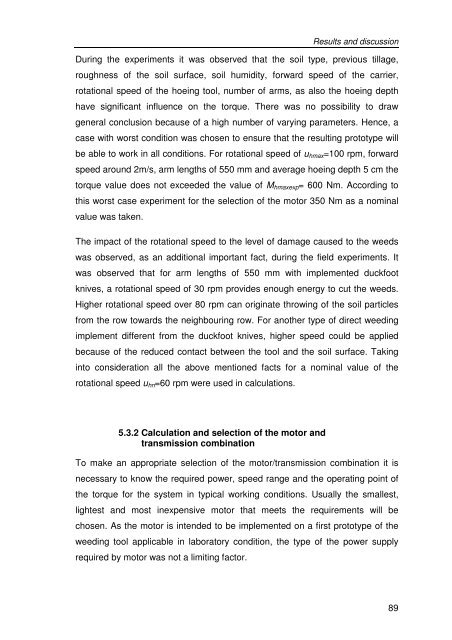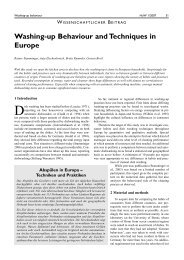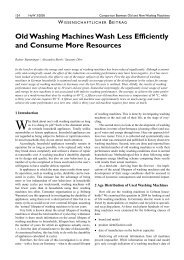Development of a novel mechatronic system for mechanical weed ...
Development of a novel mechatronic system for mechanical weed ...
Development of a novel mechatronic system for mechanical weed ...
You also want an ePaper? Increase the reach of your titles
YUMPU automatically turns print PDFs into web optimized ePapers that Google loves.
Results and discussion<br />
During the experiments it was observed that the soil type, previous tillage,<br />
roughness <strong>of</strong> the soil surface, soil humidity, <strong>for</strong>ward speed <strong>of</strong> the carrier,<br />
rotational speed <strong>of</strong> the hoeing tool, number <strong>of</strong> arms, as also the hoeing depth<br />
have significant influence on the torque. There was no possibility to draw<br />
general conclusion because <strong>of</strong> a high number <strong>of</strong> varying parameters. Hence, a<br />
case with worst condition was chosen to ensure that the resulting prototype will<br />
be able to work in all conditions. For rotational speed <strong>of</strong> uhmax=100 rpm, <strong>for</strong>ward<br />
speed around 2m/s, arm lengths <strong>of</strong> 550 mm and average hoeing depth 5 cm the<br />
torque value does not exceeded the value <strong>of</strong> Mhmaxexp= 600 Nm. According to<br />
this worst case experiment <strong>for</strong> the selection <strong>of</strong> the motor 350 Nm as a nominal<br />
value was taken.<br />
The impact <strong>of</strong> the rotational speed to the level <strong>of</strong> damage caused to the <strong>weed</strong>s<br />
was observed, as an additional important fact, during the field experiments. It<br />
was observed that <strong>for</strong> arm lengths <strong>of</strong> 550 mm with implemented duckfoot<br />
knives, a rotational speed <strong>of</strong> 30 rpm provides enough energy to cut the <strong>weed</strong>s.<br />
Higher rotational speed over 80 rpm can originate throwing <strong>of</strong> the soil particles<br />
from the row towards the neighbouring row. For another type <strong>of</strong> direct <strong>weed</strong>ing<br />
implement different from the duckfoot knives, higher speed could be applied<br />
because <strong>of</strong> the reduced contact between the tool and the soil surface. Taking<br />
into consideration all the above mentioned facts <strong>for</strong> a nominal value <strong>of</strong> the<br />
rotational speed uhn=60 rpm were used in calculations.<br />
5.3.2 Calculation and selection <strong>of</strong> the motor and<br />
transmission combination<br />
To make an appropriate selection <strong>of</strong> the motor/transmission combination it is<br />
necessary to know the required power, speed range and the operating point <strong>of</strong><br />
the torque <strong>for</strong> the <strong>system</strong> in typical working conditions. Usually the smallest,<br />
lightest and most inexpensive motor that meets the requirements will be<br />
chosen. As the motor is intended to be implemented on a first prototype <strong>of</strong> the<br />
<strong>weed</strong>ing tool applicable in laboratory condition, the type <strong>of</strong> the power supply<br />
required by motor was not a limiting factor.<br />
89





